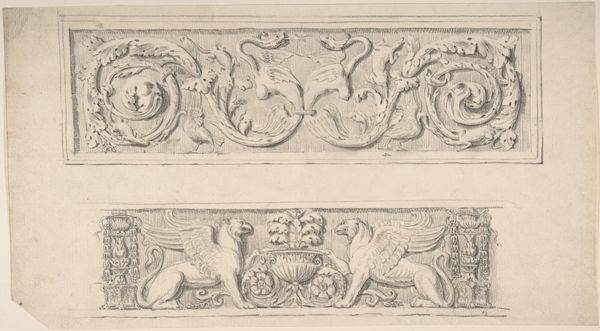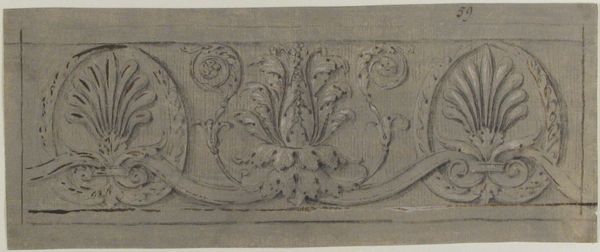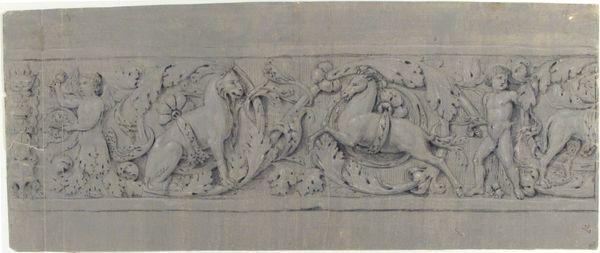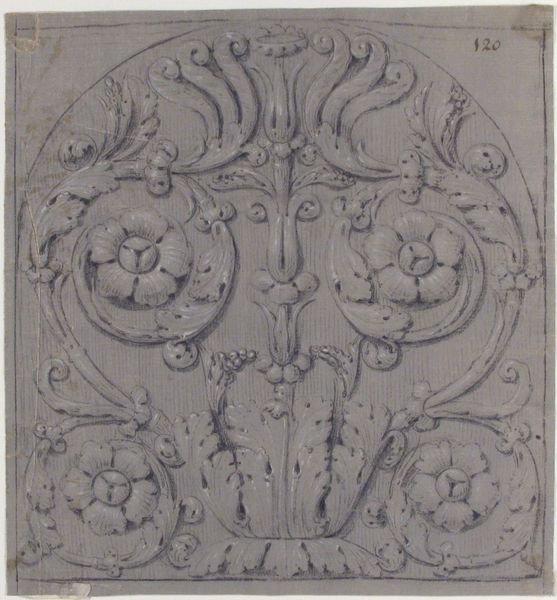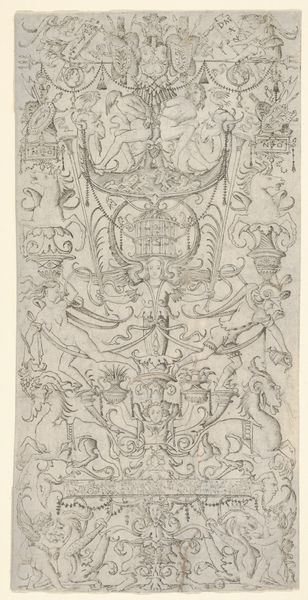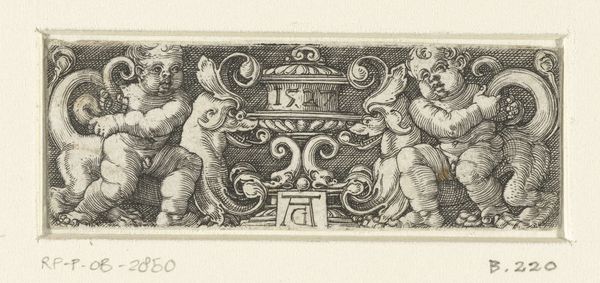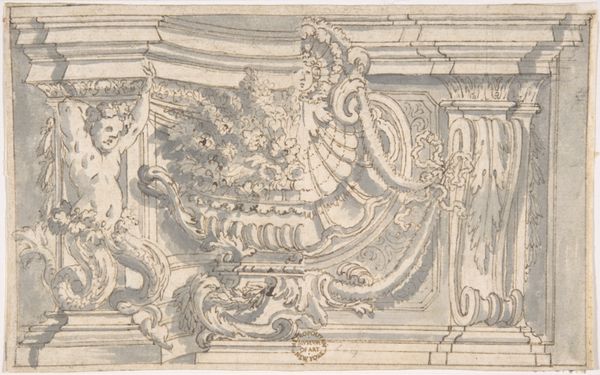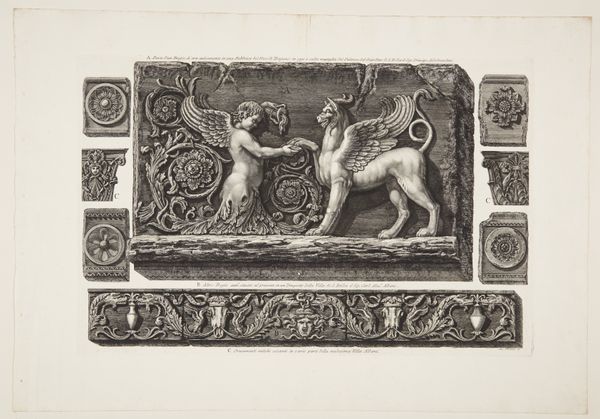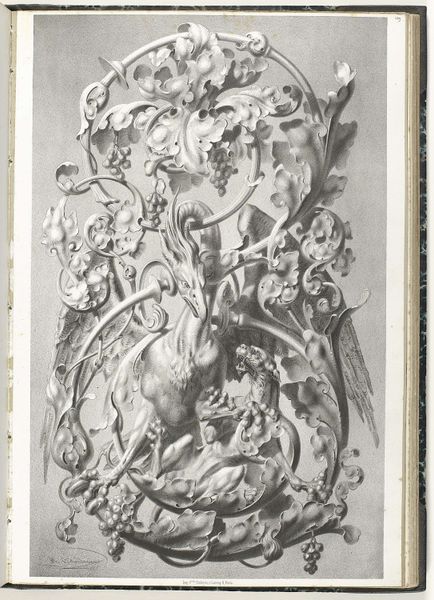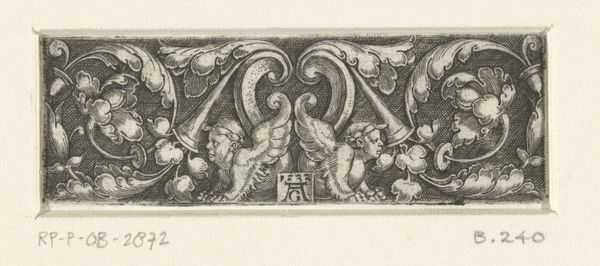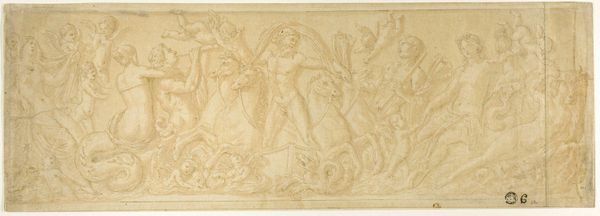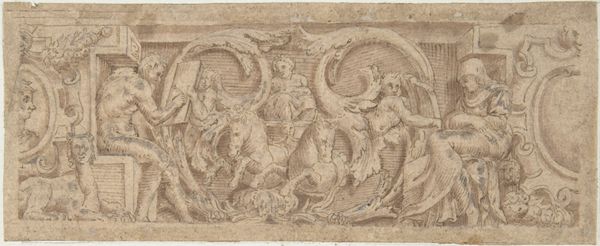
drawing, print, pencil
#
drawing
#
neoclacissism
# print
#
pencil drawing
#
geometric
#
pencil
#
decorative-art
Dimensions: sheet: 5 1/4 x 13 5/8 in. (13.4 x 34.6 cm)
Copyright: Public Domain
Curator: My eye is immediately drawn to the repetitive line work. It speaks of mass production. Editor: Indeed. We’re looking at a "Design for a Decorative Frieze," an anonymous pencil drawing from sometime between 1820 and 1855. Currently it resides here at the Metropolitan Museum of Art. It feels incredibly formal, almost imposing in its symmetry. Curator: The symmetry is the point, isn't it? Those facing griffins, flanking the central urn – the composition echoes heraldry, conveying power, status. It reflects the visual language of Neoclassicism, which drew so heavily on classical antiquity to legitimize contemporary authority. Editor: Absolutely. And look at the precise linework. Pencil allows for detail, sure, but also suggests this was a preliminary design. Perhaps intended for carving in stone or casting in plaster, to adorn a grand residence, a public building. I'm curious about the artisans who would've translated this drawing into a three-dimensional object. Curator: Think about the symbolism of the griffin itself, a composite creature: part lion, part eagle. Strength, vigilance—a guardian spirit. The urn as a vessel, representing containment, the cultivation of both life and memory. Placed in this calculated relationship of balance, these emblems are powerful statements. Editor: The question is, powerful for whom, and at what cost? Creating architectural ornaments involved teams of skilled laborers, often anonymous themselves. It's ironic that this drawing, intended for reproduction and mass consumption by the elite, relies on unseen labor and anonymous creativity. Curator: Even within that structure of production, symbols maintain a grip on our collective consciousness. Those forms tap into enduring archetypes. The desire to signify power and legacy persists across centuries and cultures, whether on the Parthenon or in a 19th century drawing for a wealthy patron’s home. Editor: Ultimately, this small design on paper illuminates broader connections. It reveals the intricate web of skill, material, and intention inherent in the creation of objects that shape our spaces and, in turn, our perceptions of value. Curator: So, whether considering its archetypal forms or the economic contexts of its potential making, we see an echo of power structures, present and past. Editor: It highlights the physical labor, tools, and economy required to manifest the visual messaging of power, doesn't it?
Comments
No comments
Be the first to comment and join the conversation on the ultimate creative platform.
